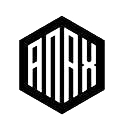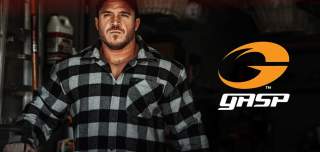Lifting belts are a contentious issue in strength training. On the one hand, you have the lifters who wear one for every single set of every single exercise they do because, they say it helps support your back” while on the other side, you have the lifters who never wear one because, they say, “wearing one makes your core weak”. As with so many polarizing arguments, the truth lies somewhere in the middle.
Firstly, it’s important to understand that lifting belts do not actually support your back but rather, they support your abs. Think about it like this, if you fix a band around a pipe and then bend the pipe, it’ll break either above or below the band. Why? Because the band concentrates the load into a much smaller area. Wearing a belt does much the same thing; it concentrates the load just above or just below the edge of the belt.
However, what a belt does allow you to do is create more intra-abdominal pressure which basically supports your back from within. This is done by aggressively pushing your abs out against the front and side of your belt. To do this, breathe in, draw your pelvic floor up, hold your breath and then push out against the front and sides of your belt. Make your belly BIG! Ideally, your belt should be tight enough that you can’t push your belly out very far at all. This will maximize intra-abdominal pressure.
Many people make the mistake of treating a lifting belt like a passive support (the band around the pipe scenario) when, in fact, you have to work with your belt to get any meaningful support from it. In addition, to generate the most intra-abdominal pressure, your belt needs to be really tight – far tighter than is comfortable. If you can wear your belt for more than a few minutes at a time, it is not tight enough and you are not using it properly.
Additionally, many belt users assume that wearing a belt will allow them to get away with sloppy techniques such as rounding their back when doing deadlifts. This is not the case. Remember, a belt focuses force onto a concentrated areas so using a belt with bad technique is arguably worse than bad technique alone.
Then you have the guys (it’s almost always guys isn’t it) who wear a belt all the time; for abs, for seated biceps curls, for leg extensions – even when pedalling an exercise bike. This is akin to wearing sunglasses in the dark! If you choose to use a weight belt you should save it for when you really need it – your top sets of exercises like squats, deadlifts and bent over rows. Some lifters wear their belt for bench pressing but these are normally competitive powerlifters looking for even the smallest advantage they can get. For most of us, if the exercise is being performed sat or lying on a bench, a belt is unnecessary.
As a general rule, save your belt for your heaviest sets and warm up without out it. That way, when you put it on, you’ll really feel the benefit.
There are lots of different lifting belts available to choose from and because belts tend to be very hardwearing and long-lasting it’s important you get the right one to avoid wasting money.
Weight lifting belts are usually narrower at the front than they are at the back. This means there is plenty of space for movement but still provides a solid structure to push your abs out into. The back is sometimes padded for comfort but a non-padded belt will work just as well. Closure will be by buckle, Velcro or a combination of both. This type of belt is usually quite thin and they require little in the way of a breaking in period.
Powerlifting belts are thicker and are the same width all the way around. Not as comfortable as weight lifting belts, they take some serious breaking in initially but can last a lifetime. Available with single or double prong buckles or a sort of lever clasp, I favour powerlifting belts but have had success with weightlifting belts too.
If you feel you need a belt on all the time, you would probably benefit from wearing a neoprene back support rather than a classic leather lifting belt. These help keep your lower back, abdomen and internal organs warm although they are not stiff enough to generate much in the way of intra-abdominal pressure. They are, however, suitable for wearing throughout your entire workout.
Of course, you don’t HAVE to use a belt but if you are serious about lifting maximal weights, using a belt can make a noticeable difference.
As for belts making your abs weak – that’s nonsense. If you use a belt properly, your abs have to work really REALLY hard. The main downside is that you have to push your abs outward and that can create an aesthetically unpleasing abdominal profile and also teaches you to push your belly out whenever you are doing anything strenuous. This is okay when you have your belt on but if you aren’t wearing it you have nothing to push your abs against. This is easily remedied by saving your belt for your top sets only and also doing plenty of bracing exercises like planks and Pallof presses with your abs drawn in.
There is no need to be a belt-hater; it’s just a tool that, if used properly, can enhance your strength and performance. Of course, many belt-haters have never used one properly and never lifted heavy enough to use one so they don’t know how to work with a belt for best results.












2 Comments
Comments are closed.